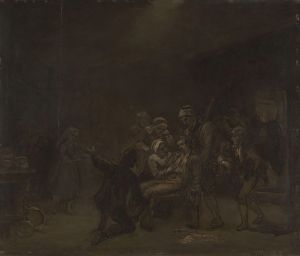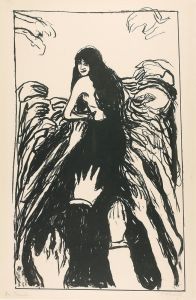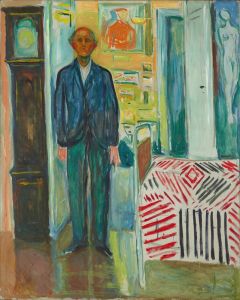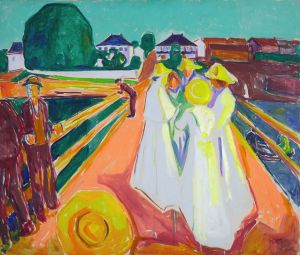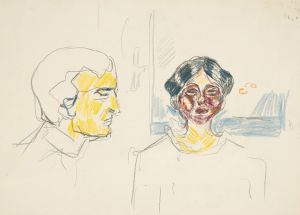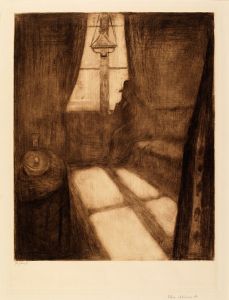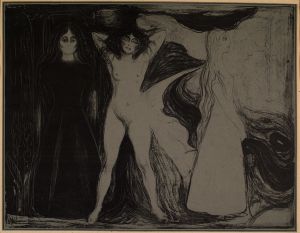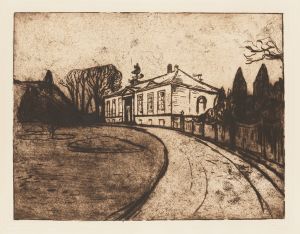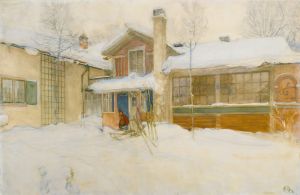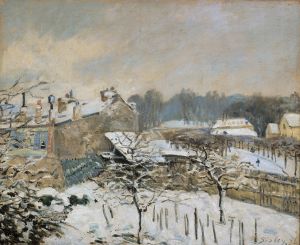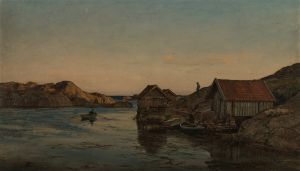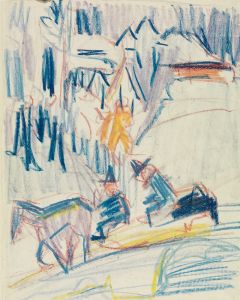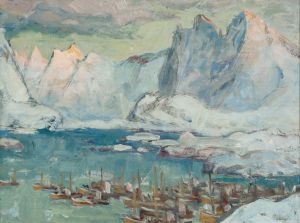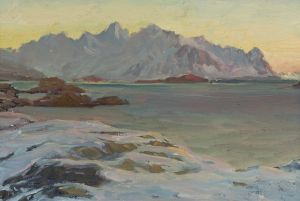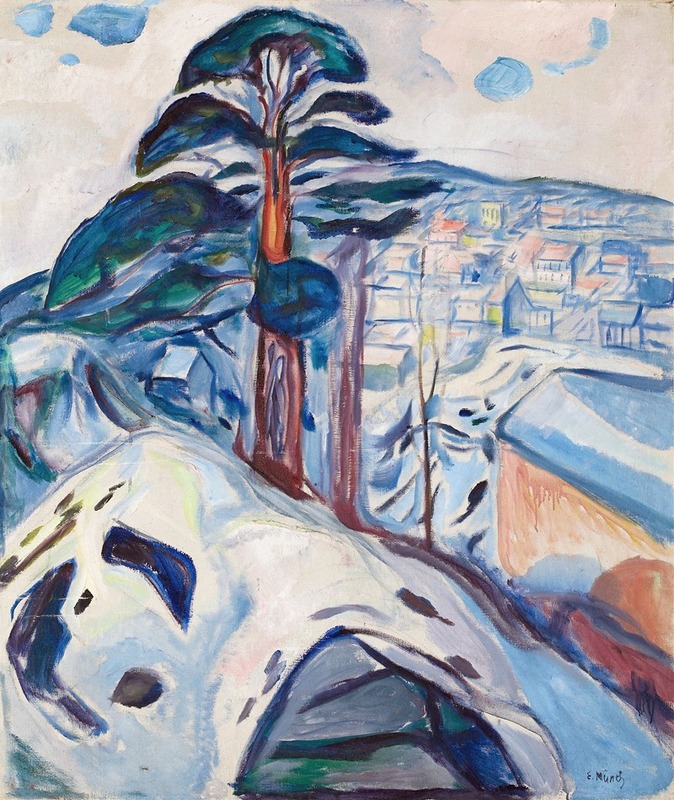
Winter in Kragerø
A hand-painted replica of Edvard Munch’s masterpiece Winter in Kragerø, meticulously crafted by professional artists to capture the true essence of the original. Each piece is created with museum-quality canvas and rare mineral pigments, carefully painted by experienced artists with delicate brushstrokes and rich, layered colors to perfectly recreate the texture of the original artwork. Unlike machine-printed reproductions, this hand-painted version brings the painting to life, infused with the artist’s emotions and skill in every stroke. Whether for personal collection or home decoration, it instantly elevates the artistic atmosphere of any space.
"Winter in Kragerø" is a painting by the renowned Norwegian artist Edvard Munch, created in 1912. Munch is best known for his iconic work "The Scream," but his oeuvre extends far beyond this single piece, encompassing a wide range of themes and styles. "Winter in Kragerø" is a part of Munch's exploration of landscapes, a genre that he revisited throughout his career.
The painting depicts a winter scene in the town of Kragerø, located in the Telemark region of Norway. Munch spent several years in Kragerø, from 1909 to 1915, a period that was significant for his artistic development. This time in Kragerø was marked by a return to nature and a focus on landscapes, following a period of personal and professional turmoil. The serene environment of Kragerø provided Munch with a peaceful setting that influenced his work during these years.
"Winter in Kragerø" captures the essence of the Norwegian winter with its depiction of snow-covered landscapes and the muted colors typical of the season. Munch's use of color and brushwork in this painting reflects his unique style, characterized by expressive lines and a vibrant palette. The painting conveys a sense of tranquility and introspection, common themes in Munch's work, as he often sought to express the emotional and psychological states of his subjects.
The composition of "Winter in Kragerø" is notable for its balance and harmony. Munch employs a combination of soft blues, whites, and grays to evoke the cold, crisp atmosphere of winter. The landscape is rendered with a sense of depth and perspective, drawing the viewer into the scene. The painting is devoid of human figures, which is a departure from many of Munch's other works that often focus on human emotion and interaction. Instead, the focus is on the natural environment, highlighting Munch's ability to capture the mood and essence of a place.
During his time in Kragerø, Munch produced several other notable works, including "The Sun" and "The Researchers," which also reflect his engagement with nature and the environment. This period is often seen as a time of renewal for Munch, as he recovered from a nervous breakdown and sought solace in the natural world. The landscapes he created during this time are considered some of his most serene and contemplative works.
"Winter in Kragerø" is part of Munch's broader exploration of the relationship between humans and nature. While the painting itself does not feature people, it invites viewers to reflect on their own connection to the natural world. Munch's ability to convey emotion through landscape is a testament to his skill as an artist and his deep understanding of the human psyche.
Today, "Winter in Kragerø" is held in high regard as an example of Munch's landscape painting. It is part of the collection at the Munch Museum in Oslo, Norway, which houses many of the artist's works and serves as a testament to his enduring legacy. The painting continues to be studied and appreciated for its artistic merit and its place within Munch's body of work.





